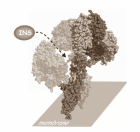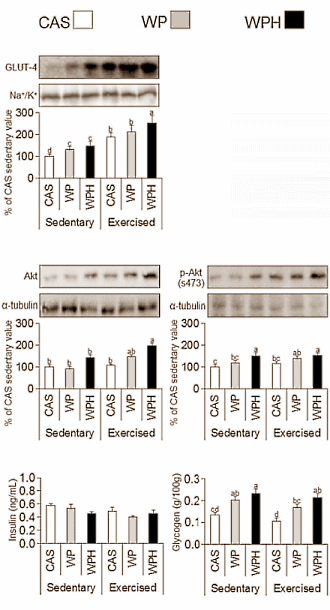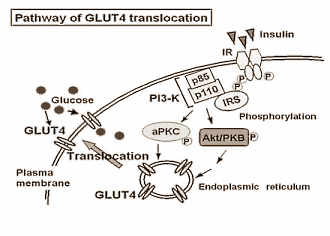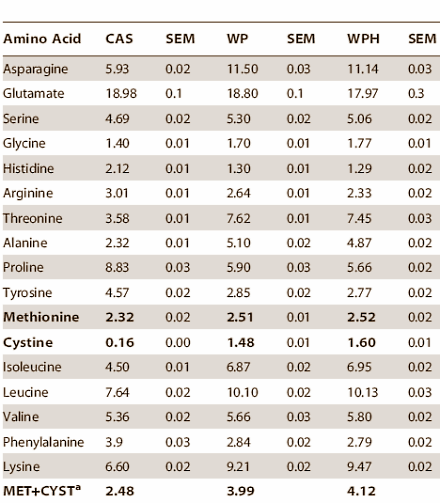|
Definition: "An ergogenic aid is any substance or phenomenon that enhances performance "
|
|
||||||||
25.11.2013 |
|
|
Whey protein hydrolysate boosts glycogen storage in muscle cells
Strength athletes who use fast carbohydrates during or after their workouts also make use of increased GLUT4 activity, thereby chasing extra glucose into the muscle cells. The increased amount of energy in the muscle cells stimulates their growth.
By the way, this strategy doesn't work for all strength athletes. There is a group that gets fat if they do carbohydrate supplementation. That's why we are interested in the Brazilian study: it may tell us how strength and endurance athletes can load up more effectively with carbohydrates.
The Brazilians wondered whether the use of whey or whey protein hydrolysate would boost the activity of GLUT4 during rest or after training. So they did an animal study in which they gave a group of rats feed for nine days that contained casein as a source of protein [CAS]. In two other groups, whey [WP] or whey protein hydrolysate [WHP] functioned as the protein source. Whey protein hydrolysate is whey that has been cut into small pieces.
After nine days the researchers got half of each of the three groups to run on on a treadmill for an hour [Exercised]. Sixteen hours later the researchers examined the muscle cells and the blood of the animals. The researchers also examined the other half of the rats, which had taken no exercise [Sedentary].
The figures below show that in both the active and non-active rats the amount of glycogen was highest in the animals that had been given whey protein hydrolysate.
Whey protein hydrolysate did not boost the production of insulin but it did activate the glucose transporter GLUT4 in the muscle cells. That probably happened via the anabolic signal molecule AKT. One way in which AKT becomes more active is when insulin interacts with its receptor, but in this case the increased activity of AKT had nothing to do with the increased insulin effect. Whey protein hydrolysate – and to a less extent non-hydrolysed whey protein – activated GLUT4 independently from insulin.
"These results should encourage further studies considering the potential of whey protein and whey protein hydrolysate in the treatment or prevention of insulin resistance and type 2 diabetes, a disease in which translocation of GLUT-4 to the plasma membrane is reduced", the researchers conclude.
How whey protein hydrolysate turns on the signal molecule AKT the researchers don't know. At the start of the article they suggest that the effect may be the work of BCAA peptides, but later on they suggest a different theory. Whey protein hydrolysate, and to a lesser extent whey, contain large amounts of methionine and cysteine [in the table the word cystine is used, but that's a typing error]. Methionine and cysteine are precursors of taurine.
Taurine may well be responsible for increased GLUT4 activity, the researchers say.
Well, well. That's interesting: BCAA peptides are enormously expensive, taurine is not.
Source:
More:
|
|




